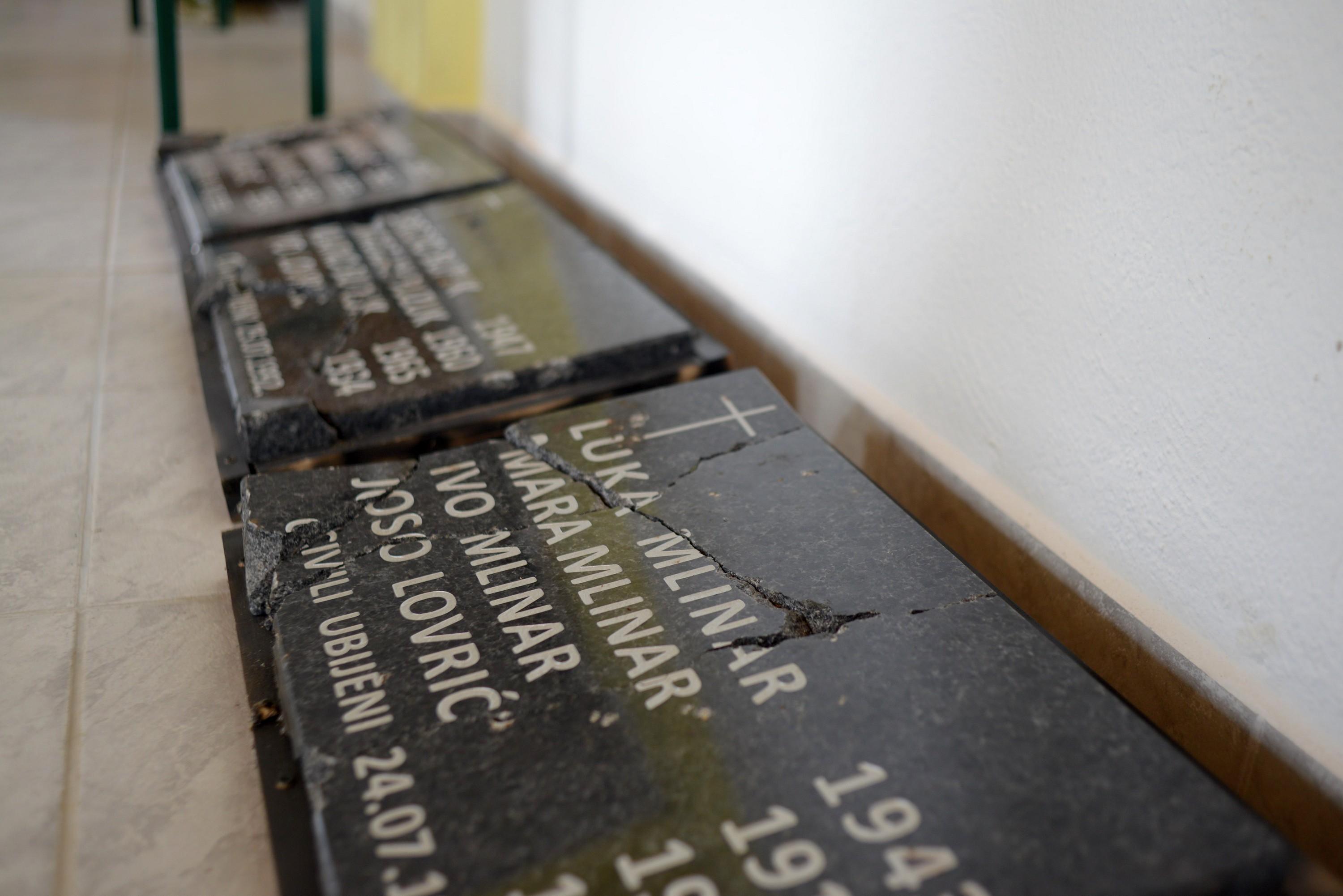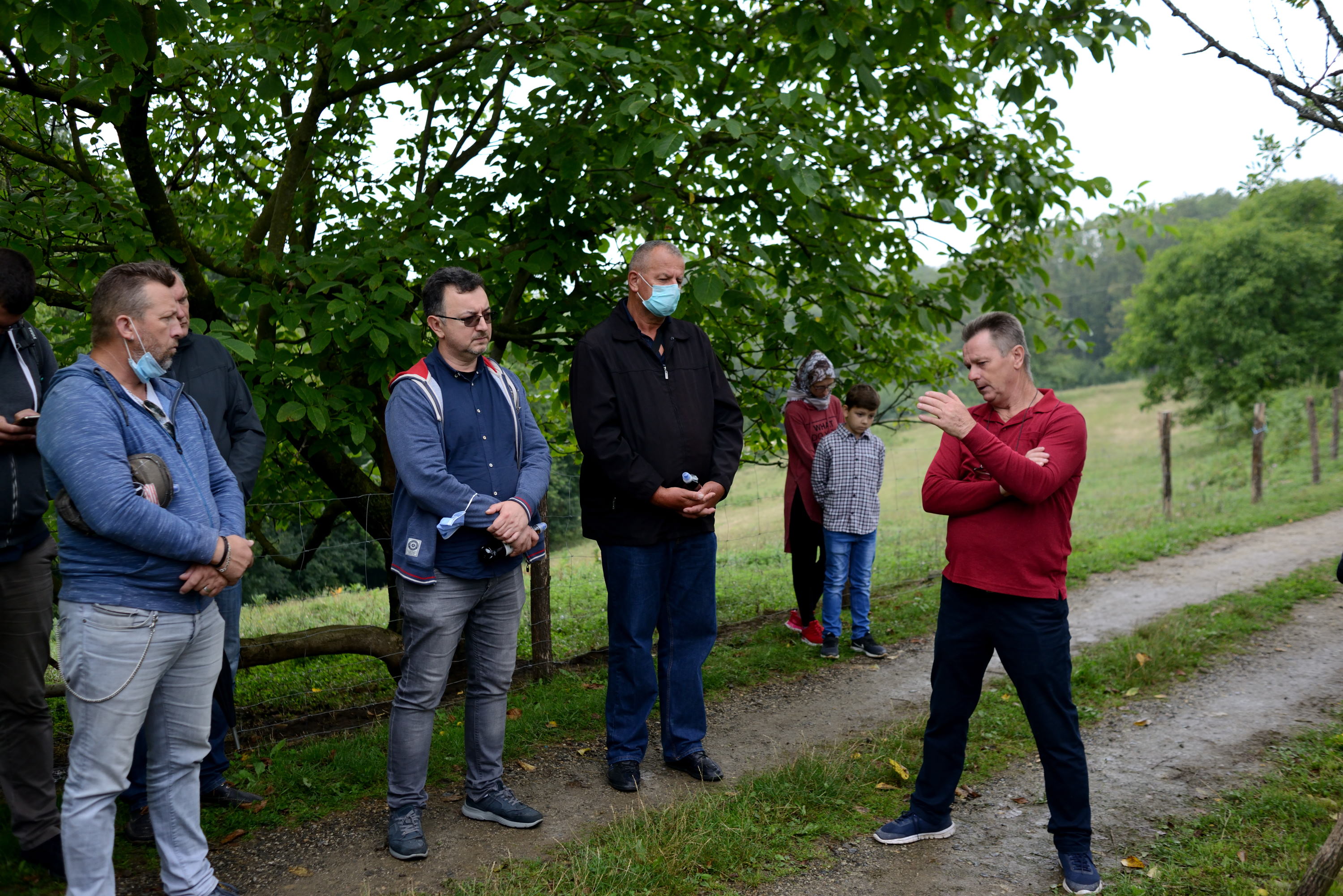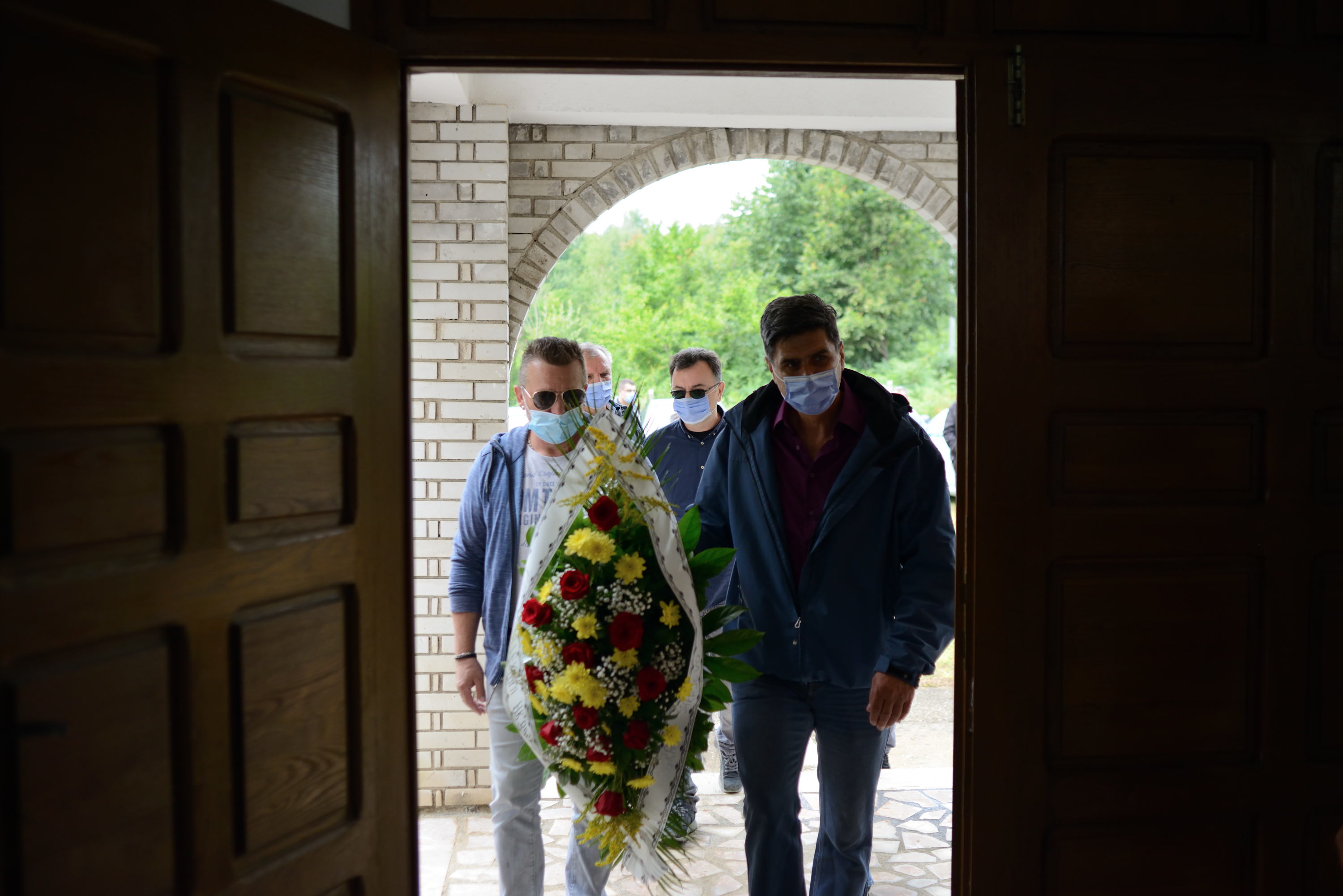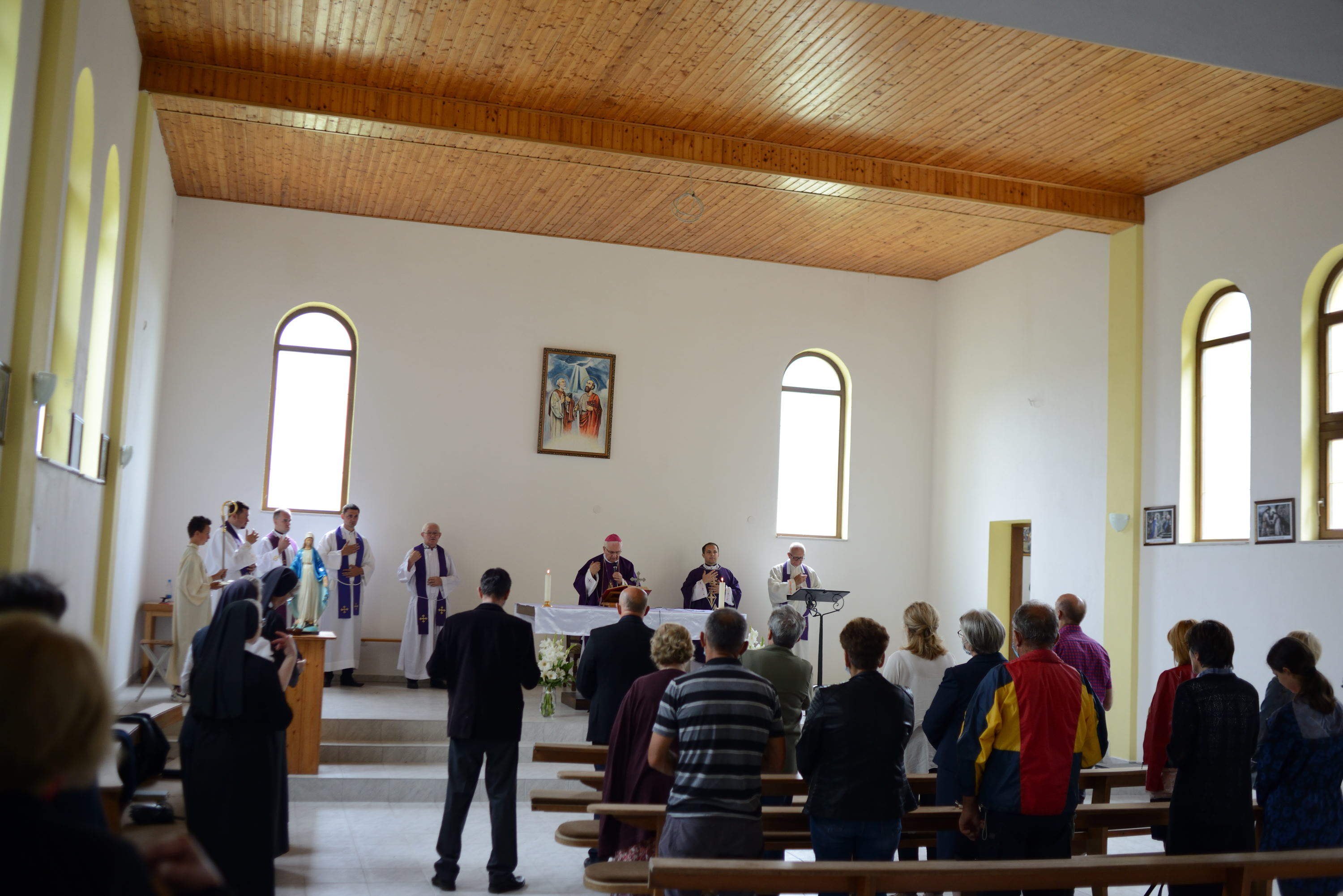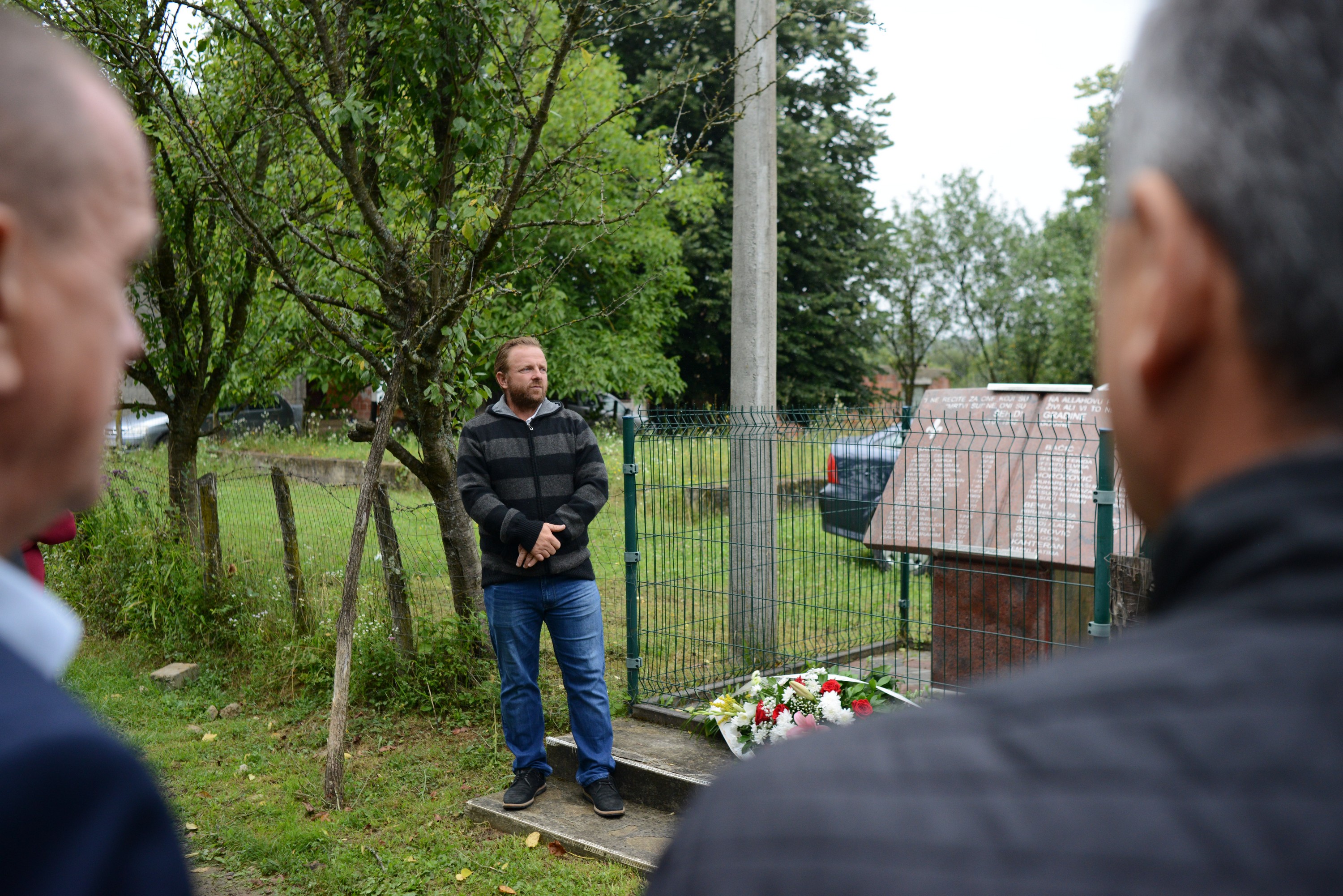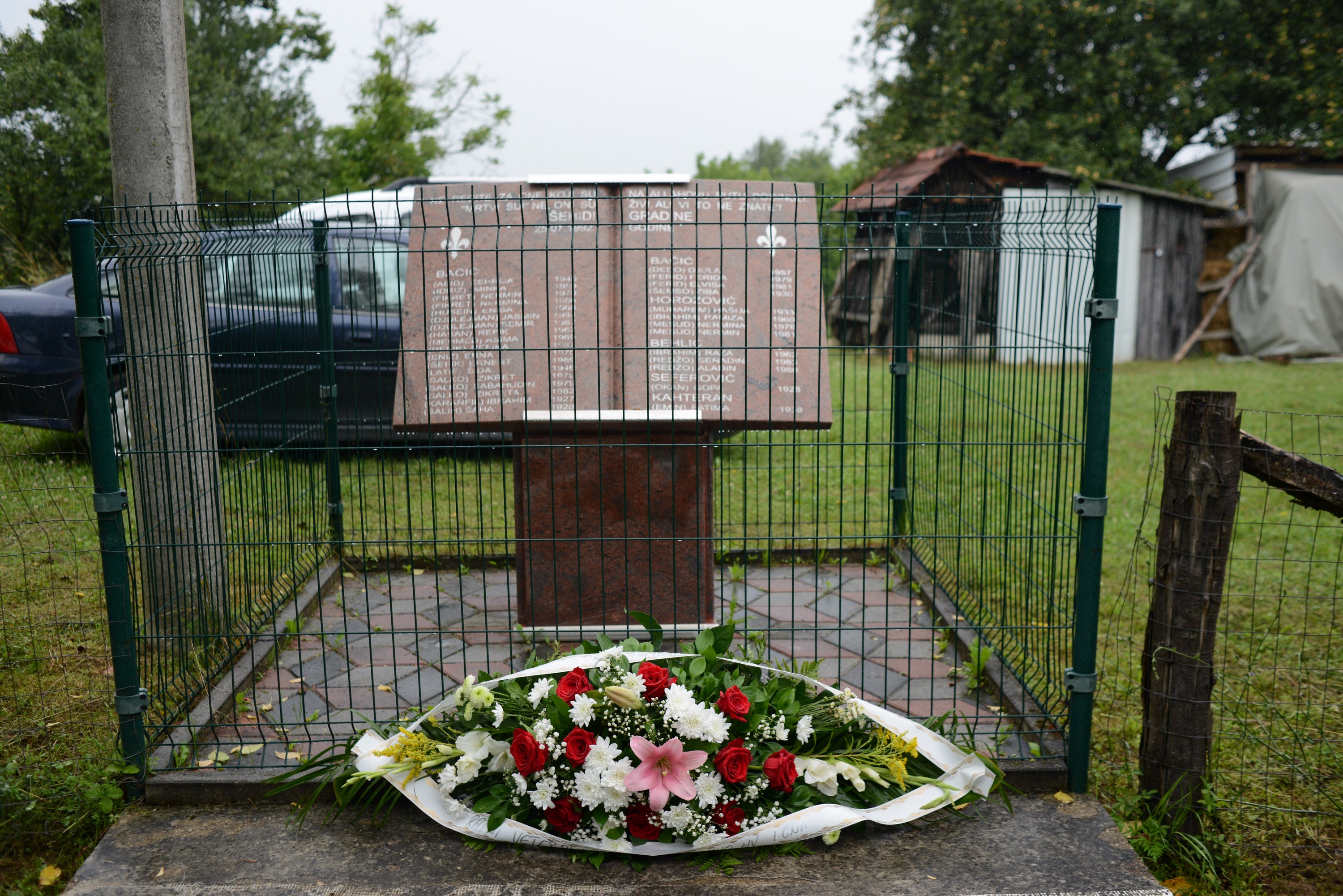Briševo and Zecovi are part of the Prijedor war story from 1992. It is a story of terror against Bosniaks and Croats perpetrated by military and police forces under the command of the wartime leadership of the Serb Democratic Party and the Prijedor Municipality Crisis Staff that was established at the time. Mass killings, camps and forced deportations marked this period, leaving more than 3,000 killed and over 50,000 expelled.
When on 24 and 25 July 1992, members of the Republika Srpska Army’s (VRS) 5th Kozara Brigade from Prijedor and 6th Krajina Brigade from Sanski Most attacked Briševo, 68 civilians were killed, mostly the elderly, women and children. Whole families were wiped out. Many of the villagers were taken to the Krinks camp.
In Zecovi, on 25 July 1992, more than 100 civilians were killed, also mostly women, children and the elderly. Two days earlier, on 23 July, men over 18 were taken to the Prijedor camps. Many of them were killed during the transport or later in organised executions of camp prisoners. The final tally is that more than 150 villagers from Zecovi were killed. The crime was committed by members of VRS and the reserve police from the neighbouring village of Rasavci.
We were invited by the Dom Briševo – Dobri Association to come to Briševo for the annual commemoration. This Association was established in Sesvete in Croatia by exiles from Briševo who had settled there and were brought together by plans to renew their village, build infrastructure to facilitate return and a memorial to honour the killed people of Briševo, as well as by the annual commemorations organised to mark the day when they were killed. The Association president Zdravko Marjan welcomed our initiative that brings together former warriors under a noble cause to honour killed innocents. He was also glad of the opportunity to talk with the veterans, having himself participated in the war as a member of the Croatian Army.
We were invited to the commemoration in Zecovi by Fikret Bačić. Fikert returned to Zecovi in 1998. At the time of the massacre in 1992, he was away, working in Germany. His wife, daughter, son, mother and another 25 family members were killed. “All people of good will are welcome, whatever their religion or nationality and whatever army they may have been in. At this place, they can hear the truth about how people were killed here and how we are still looking for the bodies of our family members,” Fikret told us when we met.
The commemorations are held on the same day, one in the morning, the other in the afternoon. Due to the coronavirus pandemic, we decided to attend the commemorations with a smaller mixed group of veterans, while keeping to all prescribed safety measures. We had been in constant contact with our hosts and keeping up with how the situation was developing, whether the event would be cancelled or whether new measures would be introduced that would preclude our arrival. It was precisely because of the pandemic that this time we could not have veterans from Serbia and members of CNA from the Belgrade office with us.
Those Who Do Not Give Up
With a group of 11 war veterans, former members of VRS, HVO, the Army of RBiH and HV, and the four of us from CNA, we arrived in Prijedor on 24 July. We were joined by another two members of our group from Prijedor, former members of VRS and the Army of RBiH, and that evening we met with Zdravko and Fikret.
Zdravko described the situation during those fatal 24 hours that it took the killers to commit the crime, relating what he had heard from the survivors because he had not been there himself. He said people were killed with unprecedented brutality. There was no cause, all hunting weapons had been surrendered previously, and the villagers were completely unarmed. There had been no attempt to organise a combatant unit in the village. After the war, bodies were exhumed from one mass grave and a number of individual graves, but the body of one boy is still missing. As for prosecution, this crime was included in the indictments for command responsibility of members of the wartime Bosnian Serb leadership, while high-ranking officers of VRS Branko Basara and Nedjeljko Aničin, indicted by the Prosecutor’s Office of BiH in 2015, are at large and presumed to be hiding in Serbia. Before the war, there were 370 people living in Briševo. Today, there are four: two returnees and one couple that moved there from Germany a few years back. After the war, the authorities of the City of Prijedor did not provide for decent road access to the village or for the electricity grid, hampering return on a larger scale. When looking at other returnee villages around Prijedor, we can say that Briševo is an exception, because infrastructure has been provided to most other places. Zdravko said that neither the Croat political leadership in BiH nor politicians from Croatia have shown any interest in Briševo, with no high officials attending the commemorations, even though this is the largest single war crime committed against Croat civilians in BiH in the past war.
Even though 28 years have passed, Fikret is still incredulously asking why they killed his loved ones. He would like to put that question to the killers, he imagines meeting them face to face and asking them. He told us about the atrocities committed against the people of Zecovi, and the thing that hurts him the most: that some neighbours took part. Many believed the neighbours had come to their village that day to protect them. Fikret wasn’t there at the time, but his cousin Zijad Bačić was. He was a fourteen-year-old boy at the time and the only one to survive the killing of his family. Fikret returned to his village of Zecovi and started a family there again. He has dedicated his life to finding the bodies of his family members and bringing their killers and those who gave the order for the massacre to face justice. He does not blame another people for what happened, he understands others suffered too and he can understand their pain. He goes around BiH with other victims, both him and Zijad participate in public speaking programmes. But he will never forgive the killers of children, women and the powerless. He hopes that the 14 that were arrested and indicted by the Prosecutor’s Office of BiH in 2014 will receive a just prison sentence. Fikret is a member of the Advisory Board of the Missing Persons Institute, a board made up of victims’ family members. He told us about the kinds of problems they face. He is generally disappointed with the work of the Institute. Little is being done and even when relevant information about grave sites is obtained, sometimes years go by without anything being done. They often have to pay for information about mass graves and they finance the exhuming themselves. Institutions reimburse the costs of equipment and workers only if they find the bodies. “That’s what it’s like when there is no state, we are left to our own devices,” he says. He made the memorial to his loved ones with his own family, on his own land in the hamlet of Gradina. Procedures to receive approval and a building permit were taking too long, he didn’t want to wait any more after years of being ignored. “That’s what it’s like when there’s no state,” he repeats. Fikret has also been struggling since 2012 for a memorial to the killed children of Prijedor, so that his two and a hundred other children from Prijedor finally receive a dignified memorial. He has been issuing appeals, attending negotiations with local authorities, looking for options and persevering. He does not want the monument to fall prey to any kind of manipulation, he just wants it to commemorate the killed children. Fikret is also fighting for a better life in Zecovi. They have reconstructed the houses and the road, but he says that even 22 years after returning, they still have trouble with water supply. Some 350 of the pre-war 700 Bosniaks who used to live in Zecovi have returned, but people are once again leaving. Economic insecurity of livelihoods is now chasing people away from their homes.
Edin Ramulić is an activist of the Culture of Memory Foundation from Prijedor and a long-time associate and friend who has participated in many actions we organised. He recounted how that period from 20 to 30 July 1992 was the bloodiest in Prijedor when mass executions of camp prisoners were committed in Keraterm, as well as the massacres in Briševo and Zecovi, all forming part of the brutal ethnic cleansing campaign. He said that for some reason these dates have been obscured in memory policy because other events were selected for official commemorations organised with support from political and religious leaders, while these are mostly left to the victims’ families to commemorate. Edin himself bears multiple identities, he is a victim’s family member and a prison camp survivor and a former member of the Army of RBiH and a disabled war veteran and a returnee. He points out that this is precisely what helped him see the bigger picture in our society and the need for peace activism.
Difficult stories, difficult fates. Digging deep into the emotions of these people and those of us who came to see them. What could we say to them after hearing their stories? In silence, we embraced the pain. It is universal for anyone imbued with humanity. We learn from these experiences and transfer them to our own communities. It is difficult to arrive at this knowledge, because we live in a divided society where information is manipulated and selectively released to the media. In our group, it is this pain and suffering that unite us, along with our commitment to do everything we can to make sure the atrocities of the past are never repeated. We will keep coming to sites of suffering, we will keep absorbing the pain. Our presence is confirmation that by expressing compassion and honouring victims, we want to overcome the barriers that keep each people mourning only their own dead.
Dignity before God and the People
On the day of the commemoration, we visited the reconstructed church in Briševo where there is a memorial plaque bearing the names of the victims. As is often the case in post-war BiH, memorials are placed inside religious buildings to protect them from desecration. Along the road leading to the village there are 15 memorial plaques marking the places where the villagers were killed. They bear the name, year of birth and date of death of the victims. The number of names on a plaque varies depending on the number of people killed at each location. Zdravko points out that the memorial plaques are meant to send the message that the killing of people in this region must not be allowed to happen again for the sake of future generations. He hopes it is now time to move the memorial plaque from inside the church into the courtyard and will try to do this perhaps as soon as next year. After laying flowers, we joined the villagers at the mass led by the Bishop of Banja Luka Franjo Komarica. In commemorating the victims, the Bishop particularly highlighted the importance and need for forgiveness and reconciliation. The parish priest of Stara Rijeka, which includes Briševo, don Boris Ljevak thanked the veterans of former armies for coming and said he was glad that we were there with them on the day when they remember the killed members of their community.
Leaving Briševo, we went to the hamlet of Gradina which is part of the Zecovi local community. In front of where his family house used to be and where members of his family were killed, Fikret has installed a monument in the shape of an open book with ayahs from the Qu’ran and the names of the victims. The commemoration is a private family affair with relatives and a religious service to honour the victims. But it is not closed to others. Fikret tells us that Serb political representatives from Prijedor have attended the commemoration in the past. The local imam recited a prayer in front of the monument and invited all of us to pay our respects in our own way to these innocent victims. We laid the flowers and then we were joined by Zijad. He looked at the monument and thought back to that fateful day. As he talks, he points to the remains of his aunt’s house where more than 30 people were hiding. “We were all in one room. At one point, he heard gunshots and someone in front of the house telling us to come out. The women and children came out first, but I was among the last, it was God’s will, as I was putting on my shoes, they had already started shooting. I could hear women and children screaming. I picked up my shoes and ran to the next house over to hide. They kept shooting until everyone was laying on the ground. Later, I saw a soldier take out a pistol and shoot those he thought were still alive,” Zijad tells us. He hid for a while longer in a nearby garden and then went over to check if anyone was still alive. He found no one still alive and he decided to flee to the neighbouring village where he had a friend from school, a Serb. The friend and his father hid Zijad for 8 days before taking him to his uncle with whom he managed to make it over to Travnik and then on to Germany. “Good people, thank you for coming. I really do not hate anyone. This was done by criminals. I will never understand why this happened, because we were always on good terms with our Serb neighbours, and it was Serbs who saved me in the end,” added Zijad.
Both of the commemorations were spared fiery political speeches, patriotic songs thundering from loudspeakers and the colours of national flags. When they ask me how people mark the atrocities in Briševo and Zecovi, I will say: with dignity. These are places for coming together, talking with each other and showing solidarity. They are open to people of good will. You could feel it in the air, it was part of the atmosphere. You simply felt welcome.
Today, 25 years after the war, Prijedor bears the burden of being the city with the largest number of convicted war criminals and 99 exhumed mass graves. There are still 760 people listed as missing, so the number of mass graves is not final either. Only around 10% of the pre-war population of the Prijedor area have returned to their homes.
The City’s Memory
Dealing with the past has gone through various phases for the people of Prijedor. There was a time when efforts by victims’ families to mark the deaths of their loved ones with commemorations and monuments ran up against opposition from Serb political representatives. They denied responsibility for the crimes and had a one-sided memory policy that privileged their own victims, erecting monuments in prominent locations such as parks and other public areas. Even at the site of the former Trnopolje prison camp, which distressed the victims and their community. Fortunately, that time is past. Commemorations for non-Serb victims have been organised for the past few years by various victims’ associations and others from the non-governmental sector. From time to time, they are attended by representatives of the local authorities. Monuments for Bosniaks and Croats have mostly been built on grounds owned by the Islamic Community and the Catholic Church. However, in the past few years, the deadlock seems to have been broken and there is now hope that a solution will be found for the issue of installing a monument in the centre of Prijedor. The monument to 102 killed children of Prijedor has been green-lighted for construction and is currently in the phase of searching for an appropriate location.
The story of the past war in Prijedor is irreconcilable with its Second World War legacy of a town at the foot of Mount Kozara, which was a symbol of antifascist struggle against the German occupier and domestic traitors, the Ustashas and Chetniks. It is the city of Dr Mladen Stojanović and other national heroes who gave their lives calling for brotherhood and unity among our peoples, entrusting new generations with the noble task of preserving the freedom and peace that were paid for in blood. The sheer quantity of evil that surfaced in the 1990s shows that history has had some very poor students. There were those who were calculating and figured preventive violence was the way to go to avoid being on the receiving end as their ancestors had been. Today, we can view this as an example of how victims become perpetrators of crimes. And it is something we have to live with. The choice before us is whether to take that part of history from the 1990s and defend it and live in isolation, nurturing a tradition that unquestioningly justifies acts committed for a “higher political purpose”, or to find a way for the community to take responsibility and with a fair attitude towards the past provide satisfaction to the victims’ families and the returnee population, allowing them to integrate and build a future with their fellow townspeople.
The photo gallery is available HERE
Media reports:
Dnevnik.ba
